What are off-road lights
Off-road lights are auxiliary lighting devices that are designed and constructed to withstand the rigors of the off-road adventures and deliver an outstanding light output to enhance the visibility of rough terrains and extreme environments, while giving vehicles a touch of style. Off-roading on rugged terrains and unsurfaced roads, such as those with sand, gravel, riverbeds, mud, snow, and/or rocks, at night is treacherous, because besides the moon and stars on a clear night, the visibility of the road ahead is provided solely by vehicle mounted lights.
Off-road lights are used to complement and enhance any off-road vehicle’s factory headlights, driving lights, or fog lights. Nothing transforms the nighttime driving experience quite like off-road auxiliary lighting. Off-road lights are mounted on bull bars, roof racks and bumpers to project light further than high beam headlights, provide a wider spread of light, or pierce the foggy or hazy weather far into the distance. In addition to meeting the demanding requirements of 4WD enthusiasts throughout the world, a whole bunch of industries use off-road lights on their vehicles. These auxiliary lights are often found on heavy-duty trucks, fire rescue and police vehicles, tow trucks, agricultural and forestry vehicles, construction vehicles, mining machines, and other off-road equipment applications.
Auxiliary lighting applications
The range of off-road auxiliary lighting applications is versatile. A predominant application of off-road lights is to serve as driving lights that provide illumination forward of the vehicle to light up an area further and wider than the headlights can reach. Off-road driving lights can be designed to project light over great distances in a concentrated beam, which is especially useful for driving at high speeds on remote roads with limited visibility. These high beam auxiliary lights can also be designed to produce floodlighting that enables excellent peripheral vision for safely rushing through harsh off-road terrains.
In off-road vehicles, auxiliary driving lights are often mounted on the vehicle’s roof or windshield frame to provide maximum coverage. Off-road fog lights are used to provide improved visibility in conditions of poor visibility due to the presence of rain, fog, snow, or mist. They’re generally forward lighting devices (front fog lights) and may be used in place of low beam headlights to reduce the glare back from fog or snow. Off-road lights are also available as work lights that illuminate work areas around a vehicle to ensure greater productivity, more precise maneuvering, faster reaction and more occupational safety.
Legacy lighting technologies
Conventional off-road lighting systems convert electrical energy to light using halogen or high-intensity discharge (HID) technologies. For many years, halogen lamps were the primary light source used in vehicle lighting systems. Although halogen lamps have low upfront costs, exhibit excellent color rendering and require minimal components to form a luminaire, they are extremely inefficient for forward lighting applications. The HID light sources—xenon short arc lamps—are more advantageous than halogen lamps when it comes to long range illumination.
Xenon short arc lamps are capable of producing a collimated, far-reaching beam of light in a color that closely matches that of daylight (6000K). However, the xenon bulb has drawbacks. They emit light by passing electricity through ionized xenon gas at high pressure which poses a potential hazard. Xenon lamps are as inefficient as halogen lamps. Operating them at high wattages can put strain on the vehicle’s electrical system. Both xenon and halogen lamps are short-lived, and they are susceptible to damage and failure from shock and vibration due to the glass construction.
LED technology takes center stage
Off-road lighting applications have become a realm of solid state lighting (SSL) technology. The monumental shift to LED lighting has resulted in large-scale, measurable energy savings and an array of positive impacts associated the LED technology. LEDs emit light through recombination of electrons and holes in the active region of the diode upon application of an electrical bias across the p-n junction. The use of InGaN material system and advances in packaging technology bring lighting to a new level of efficiency.
While the improvement in source efficiency has been impressive, it is only one of the benefits of switching to LED lighting. Lighting attributes, such as spectral (color) quality, beam pattern, intensity controllability and system reliability can be prioritized along with system luminous efficacy to provide the best lighting for automotive and powersports applications. The small source size and optical directionality of LEDs provide for new form factors that take vehicle lighting to a whole new level of style and enable precisely controllable optical distributions for spotlighting and floodlighting applications. The solid state nature of the LEDs allows LED off-road lights to stand up to all expected operating conditions typical of off-roading environments.
A multidimensional engineering work
LED off-road lights are dedicated lighting systems that incorporate LEDs, driver and control circuitry, thermal management, optics, together with the parts designed to protect the system components against the effects of extrinsic elements. These auxiliary lights may take forms of light bars or can be assemblies in round, square or oval shapes. Each light is built around integrating an LED module with the other luminaire components to achieve the required performance and quality.
Light source
The LED module comprises an array of LEDs arranged to form a light emitting surface (LES) that is tailored to light distribution requirement of a specific application. Most off-road lights use high operating temperature capable LEDs which can be ceramic-based high power LEDs or chip scale packages. The fundamental packaging philosophy of these LEDs is to reduce thermal resistance of the semiconductor package to a minimum and increase thermal stability of the package materials to a maximum. Optimized package design offers these LEDs high drive current capability while still maintaining high efficiency across the operating range and lumen maintenance over the rated life. Often times the LEDs are spectrally engineered to emit cool white light which supports positive psychological stimulation, improves visual performance in low lighting (mesopic) conditions, and contributes a high package efficacy due to the minimal Stokes loss. To help improve visibility in hazy or dusty atmospheres, the fog lights may use amber or yellow LEDs which have better fog/haze penetration ability than white LEDs
Thermal management.
The LEDs are solder mounted on a metal core printed circuit board (MCPCB) which provides a circuit layer for electrical connections, a heat spreader substrate, and a thermally conductive dielectric layer for electrical insulation between circuitry and the heat spreader while constitutes a part of the thermal path. The integrity of the LED substrate to PCB solder joint is one of the key determinants of the reliability of LED off-road lights as the operating environment of these products can comprise temperature extremes, mechanical shocks and vibrational stresses. A damaged or faulty solder joint due to strains incurred in thermal cycling or mechanical damage can cause an open circuit failure, which often means the complete electrical failure of the LED auxiliary light. The LED circuit board is attached to the heat sink to create an uninterrupted thermal path. A thermal interface material (TIM) is placed between the PCB and the heat sink to maximize the heat flow across jointed solid surfaces.
Optical system
On the front of the LED module, lenses, reflectors, or hybrid lens/reflector optical systems are indexed to the circuit board to regulate luminous flux from individual LEDs. From pencil beams to spread distributions, package-level optical control allows to extract the maximum amount of light emitted from the LED and project it exactly where it is needed.
LED driving and dimming
The integral driver circuit converts the incoming DC power to a voltage and current compatible with the LED packages, and may incorporate dimming control circuitry. As LEDs are sensitive to current and voltage fluctuations, and the LED forward voltage has a negative temperature coefficient, the driver must provide tight regulation and control on the current output provided to the LED load under supply voltage or load variations. The battery voltage in a vehicle can vary considerably, a switching power supply is essential if the load voltage is higher than the supply voltage or the supply voltage has a wide variation and may be below the load voltage at any time. Multivolt circuitry using a boost–buck topology is often implemented to keep the light output constant over wide voltage range of, e.g., 9 to 36 volts. It also enables the light to be used with both 12V or 24V DC systems.
EMI compliance
Switching regulation generates electromagnetic interference (EMI). Automotive applications have tough requirements on electromagnetic compatibility (EMC). It is therefore necessary to take into account the EMI filtering and screening when designing a DC-DC converter. Conversely, linear regulation can be used to meet the tight EMI specifications, but the efficiency may suffer and the supply voltage should be kept above the load voltage. The key performance metrics of LED drivers also include their ability to protect downstream components from abnormal operating conditions such as overvoltage, undervoltage, overcurrent, reverse polarity, short circuit and overtemperature. Protection circuitry that handles these abnormalities is therefore a part of the driver circuit configuration.
Corrosion and ingress protection
Off-road lights must withstand the rough and tumble of off-roading and survive the abuse of harsh, most unforgiving terrains and extreme climates. A typical aluminum construction provides rugged durability and enables the housing to perform a function of a heat sink. The extruded or die cast aluminum housing is usually equipped with integral cooling fins which maximize heat sink performance. An aerodynamic design may be deployed to promote natural convection cooling. Chemical surface treatment of the aluminum housing forms a protective film that provides exceptional corrosion resistance. The light engine emits behind a polycarbonate lens which provides impact, UV, and scratch resistance.
Off-road lights are hermetically sealed and therefore protected against the ingression of dust and water, and may be submersible and resistant against penetration of water at high pressure steamjet cleaning. Installing a pressure equalizing vent in a sealed enclosure allows to atmospherically equalize with the outside environment, effectively preventing the internal vacuums or pressure build-ups caused by rapid changes in temperature.
Laser lighting
Though LED lighting is dominating vehicle lighting applications, they suffer from the well-known efficiency droop effect due to operation at excessively high current densities. Limited drive current density restricts the luminous flux achievable from a single LED for a given chip area. This limitation compromises the ability of LED lights to achieve long illuminance throw and precise beam shaping. This presents a fundamental challenge for LEDs to compete with xenon HID light sources in high beam forward lighting applications. In comparison, solid state laser lighting delivers the highest flux density available of any light source.
Because the emission of photons within a laser diode is dominated by stimulated emission, Auger recombination and carrier spillover at high drive current conditions are much less evident when compared with LEDs which generate photons through spontaneous emission. As a result, high power lasers with very small scale are being implemented on off-road lights for projecting concentrated beams over very long distances.

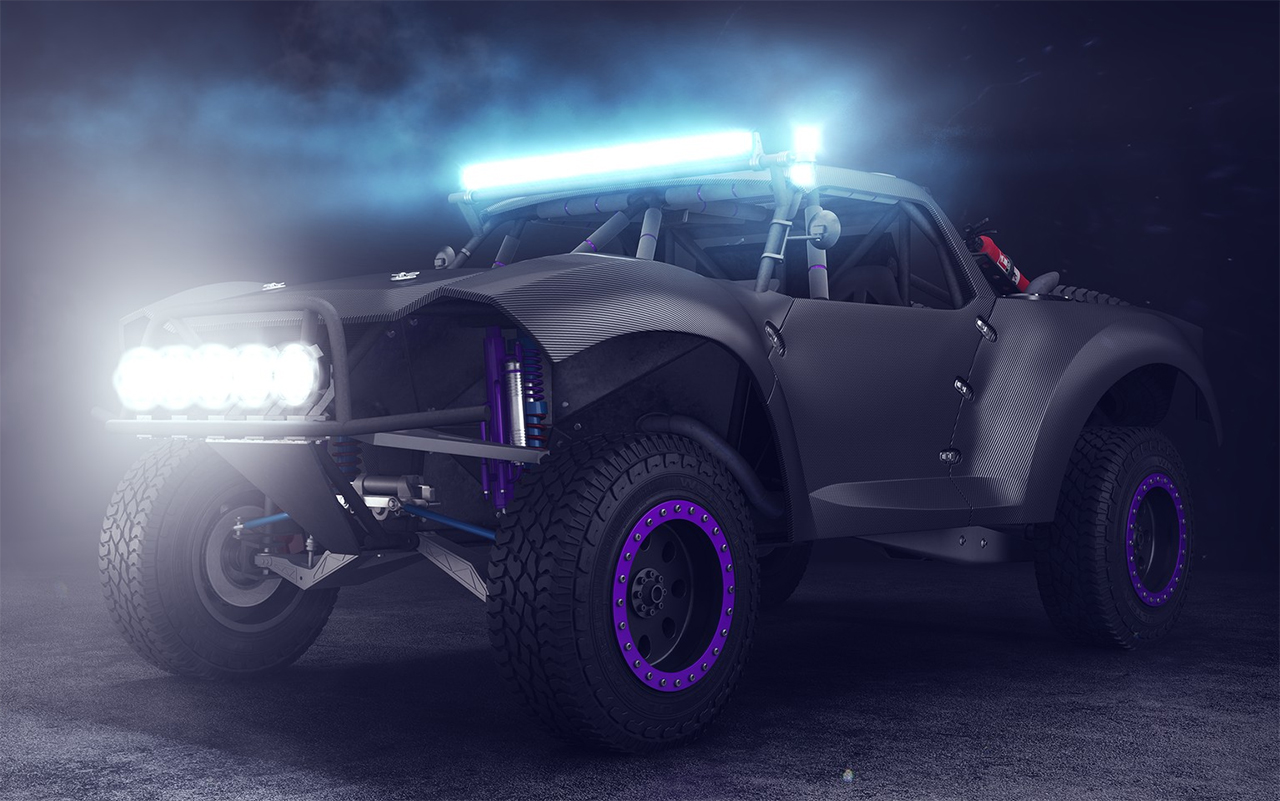
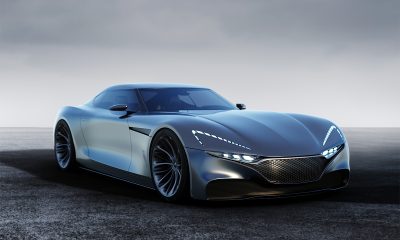
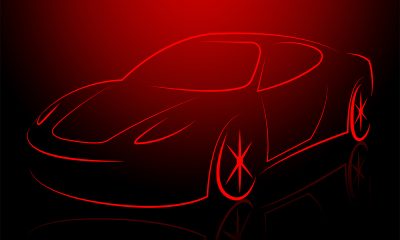
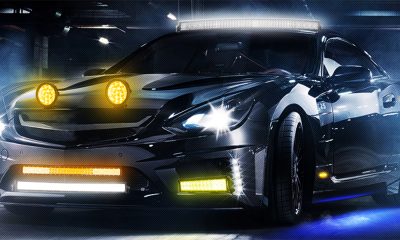
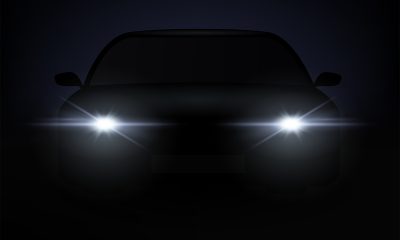
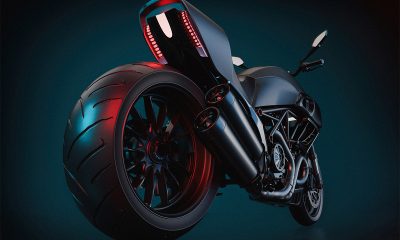



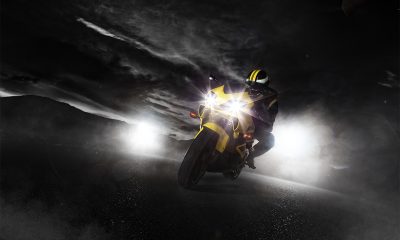
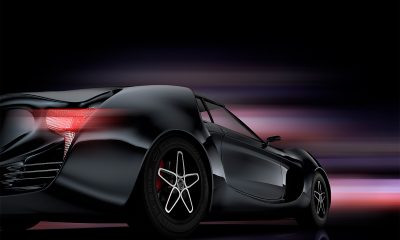
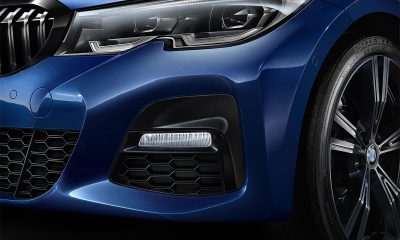






Loading...